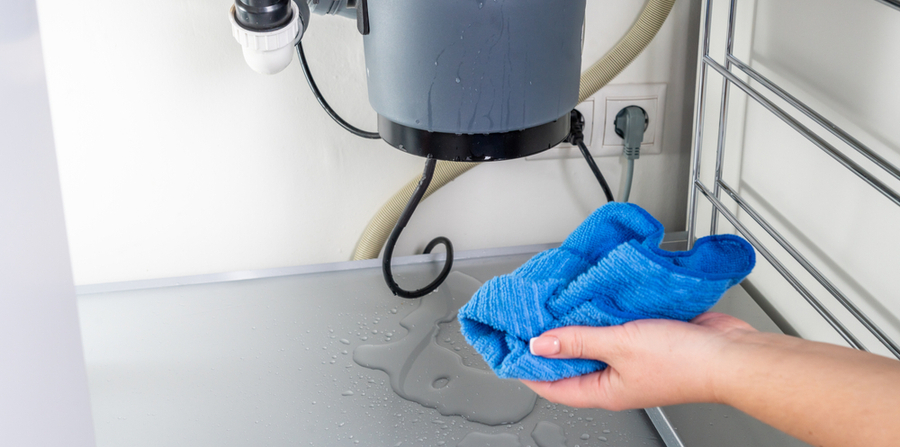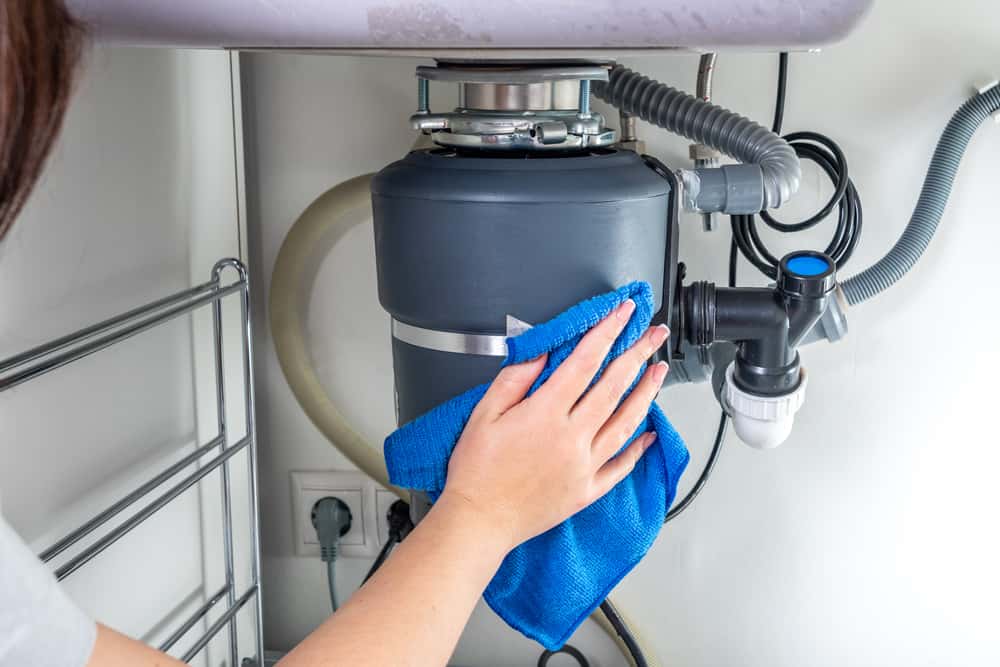Our Comprehensive Guide to Fixing a Leaky Garbage Disposal
Our Comprehensive Guide to Fixing a Leaky Garbage Disposal
Blog Article
We have encountered this post about Why Is directly below on the net and think it made good sense to talk about it with you on my blog.

Garbage disposals are crucial kitchen devices that aid in dealing with food waste effectively. Nonetheless, a leaking waste disposal unit can be a frustrating and messy problem to deal with. Thankfully, several leakages can be repaired conveniently with a few straightforward steps. In this article, we will certainly discuss how to take care of a leaking waste disposal unit effectively.
Introduction
Garbage disposals are installed under kitchen area sinks and are designed to shred food waste right into smaller sized pieces, allowing it to pass through the plumbing system quickly. While these tools are typically reputable, leaks can happen over time due to damage, loosened links, or damages to the system.
Typical Causes of Leaks in Rubbish Disposals
Worn Seals and Gaskets
Seals and gaskets play an important function in protecting against water from dripping out of the waste disposal unit. With time, these elements can wear away, leading to leaks around the disposal unit.
Loose Links
The links between the garbage disposal and the plumbing system can end up being loose gradually, causing water to leakage out throughout operation.
Splits or Openings in the Disposal Unit
Physical damage to the garbage disposal, such as fractures or openings in the housing, can likewise result in leakages.
Recognizing the Resource of the Leakage
Prior to attempting to take care of a dripping waste disposal unit, it is necessary to recognize the resource of the leakage. This can commonly be done through visual evaluation or by conducting simple examinations.
Visual Evaluation
Evaluate the waste disposal unit system carefully for any indicators of water leak. Pay attention to areas around seals, gaskets, and connection points.
Evaluating for Leaks
One way to examine for leakages is by running water with the disposal unit and looking for any kind of visible indications of leakage.
Tools and Products Needed for Fixing a Dripping Garbage Disposal
Prior to starting the fixing procedure, gather the needed tools and products, consisting of a screwdriver, flexible wrench, plumbing professional's putty, replacement seals or gaskets, and epoxy or patching product for fixing splits or openings.
Step-by-Step Guide to Fixing a Leaking Garbage Disposal
Turn Off the Power
Before trying any repairs, ensure that the power to the waste disposal unit unit is shut off to stop the threat of electric shock.
Find the Leakage
Recognize the exact area of the leak and determine the cause.
Tighten up Connections
Utilize a wrench to tighten any type of loose connections in between the disposal device and the plumbing system.
Change Seals or Gaskets
If the leakage is because of worn seals or gaskets, get rid of the old elements and replace them with brand-new ones.
Patching Fractures or Openings
For fractures or holes in the disposal unit, usage epoxy or an ideal patching product to secure the damaged area.
Examining the Waste Disposal Unit After Fixing
When the repair is full, check the garbage disposal by running water with it to make sure that the leak has been resolved.
Preventive Maintenance Tips to Prevent Future Leaks
To prevent future leaks, it is necessary to execute routine maintenance on your garbage disposal. This includes maintaining it clean, avoiding putting non-food products or hard objects down the disposal, and occasionally looking for leaks or various other issues.
Verdict
To conclude, dealing with a leaking waste disposal unit is a fairly straightforward procedure that can be finished with fundamental devices and products. By complying with the actions detailed in this short article and exercising preventative upkeep, you can maintain your garbage disposal in good working problem and stay clear of costly repair services in the future.
HERE’S HOW TO FIX YOUR GARBAGE DISPOSAL
WHAT TO DO IF SOMETHING IS STUCK IN YOUR GARBAGE DISPOSAL
If the impeller won’t turn, there’s probably something stuck in the disposal. It could be a steak bone or peach pit, although plumbers report pulling all sorts of inappropriate objects out of disposals, such as bottle caps or aluminum foil. Make sure power to the disposal is off, and look inside to see if you can see the source of the jam.
Never stick your fingers in a disposal. Pull out anything you see with tongs or pliers.
If the disposal still won’t work, it may be time to call a plumber or consider buying a new disposal. GEM Plumbing & Heating is here for all of your garbage disposal needs.
WHAT TO DO IF YOUR GARBAGE DISPOSAL DRAIN IS CLOGGED
Take everything out from underneath your sink and put a bucket or other container under your disposal to catch any water that drains out. Disconnect your disposal from the power supply. If it’s plugged into a wall outlet, unplug it. If it’s hardwired into an electrical box, go to the electrical panel and turn off the breaker for the disposal. Pour ¼ cup of baking soda into the drain, followed by ½ cup of white vinegar. Give the solution a few minutes to fizz and do its work. Look into the disposal with a flashlight to see if you can see an object that might be causing the clog. If you see it, remove it using tongs or pliers. MORE TIPS ON DEALING WITH A CLOGGED GARBAGE DISPOSAL
Never use drain cleaner in a garbage disposal. It can damage the plastic parts inside the disposal. You can also be splashed with the caustic liquid while working to clear the clog. Beware! Never stick your fingers into a garbage disposal. Trust us — not a good idea. In many instances, your dishwasher drains through your garbage disposal. This allows the disposal to grind any large food particles that may be drained out of your dishwasher. There are some jurisdictions, however, where the plumbing code prohibits such a connection. WHAT TO DO WHEN YOUR DISHWASHER DRAINS THROUGH THE DISPOSAL
Run some water in the sink so your plunger has at least a ½-inch of water to create a seal and plunge vigorously up and down several times. You may need to repeat this several times. Run hot water down the drain to clear any residue that remains.

As a reader on How to fix a pretty consistent leak from my garbage disposal, I figured sharing that piece of content was sensible. Do you know somebody who is occupied with the topic? Be sure promote it. Thanks a lot for taking the time to read it.
Source This Article Report this page